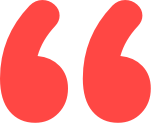
Head of Online Medical Content

Audiology Expert

I am tired after social gatherings. Do I have hearing loss?
Understanding why listening makes you feel tired
Overview | Social fatigue | Understanding listening fatigue | How can listening fatigue affect your hearing? | How can hearing aids help? | Coping in the meantime | Summary
Last Hearing Aid UK Update:
Overview
Tiring after social events can signal hearing loss, causing listening fatigue. The brain works harder to understand speech, especially in noise, leading to exhaustion.
Hearing aids can help by improving clarity. If social settings feel draining, consider a hearing test. Taking breaks and finding quiet can also ease fatigue. Early support improves well-being.
Are you exhausted after social events?
Many people experience fatigue following social events, particularly in busy or noisy environments. Similarly, we have all experienced exhaustion on some level after listening to a conversation for a long period of time.
On the whole, this is a normal consequence of simply 'paying attention' and remaining engaged.
However, it's worth considering whether there might be an underlying cause, especially if you consistently feel mentally and physically drained after social gatherings, as undetected hearing loss could be playing a part.
This article explores how hearing loss can lead to listening fatigue, leaving you mentally exhausted. Learn how to spot the signs and what steps you can take to reduce the strain.
Key points about listening fatigue:
- Listening fatigue is due to your brain having to work that little bit harder to understand what is being said.
- Those with hearing loss tend to experience listening fatigue more often than those considered to have "normal" hearing.
- Hearing aids, historically, are a type of treatment used to support your brain's sense of sound, process sounds more easily, and help reduce listening fatigue.

Understanding listening fatigue
Social occasions, whether it’s a family get-together, dinner with friends, or a work event, are often filled with conversation, background noise, and multiple people speaking at once. For those with even mild hearing loss, these situations can quickly become exhausting.
This is due to something known as listening fatigue. When your ears aren't fully capturing sound, especially speech, your brain must work significantly harder to interpret what’s being said.
It’s constantly filling in gaps, guessing words, and relying heavily on visual clues. Over time, this extra mental effort can be physically draining.
Listening fatigue isn’t exclusive to those with severe hearing loss. Even subtle changes in hearing, particularly in higher frequencies, can result in this experience.
Related reading: Digital and listening fatigue
What does the research say?
Research, done back in 2023, showed that those with hearing loss claim higher levels of fatigue than those who don't.
In fact, the more profound the hearing loss, the more likely a person will report feeling fatigued most days. This is also considering other causes, such as depression, that are already under control.
Could this be affecting you?
If you're unsure whether your post-social fatigue might be related to hearing, ask yourself the following. If you answered ‘yes’ to one or more of these, it may be worth having your hearing professionally assessed.
- Do you frequently ask others to repeat themselves?
- Do group conversations feel harder to follow than they used to?
- Are you particularly tired after events where you need to concentrate on your speech?
- Do noisy environments make it more difficult to understand others?
- Have you started avoiding social occasions due to how tiring they feel?
How does hearing loss cause listening fatigue?
When you have hearing loss, in simple terms, your brain needs to focus more on recognising and interpreting the sound information it receives in your inner ear. This leads to mental fatigue.
Your hair cells in your ears are effectively tuned into specific frequencies or pitches. When said cells die, your auditory system can't understand those frequencies, ultimately making it harder for your brain to process sounds coming in.
Hearing loss is often subtle
Hearing loss does not always present as complete or sudden hearing loss. It can begin gradually and may not be immediately noticeable.
Often, people compensate without realising, turning up the volume, relying on lipreading, or simply withdrawing from conversation when it becomes too difficult.
This gradual compensation is often what leads to fatigue. Your brain is working harder, for longer, and under increased pressure in environments where clear communication is key.
Related reading: Types of hearing loss
How can hearing aids help with listening fatigue?
Hearing aids (or cochlear implants for the most severe hearing loss cases) can successfully support and reduce listening fatigue and speech understanding, even amidst the babble of life's noise.
Research also indicates this to be true, especially when reporting on improvements in reaction time and word recall.
Hearing aids, which are professionally fitted, reduce listening effort, making it easier to hear speech (usually in high frequencies) that you might have struggled with in the past. This, in turn, helps you to understand words and their clarity.
What can you do next if you suspect hearing loss?
The most effective first step is to book a hearing test. Whether you visit a local audiologist or arrange a hearing test at home, the process is simple, non-invasive, and can provide valuable insights into your hearing health.
Early detection of hearing loss allows for a wider range of treatment options and can greatly improve your daily quality of life, socially, emotionally, and cognitively.
How to cope with listening fatigue in the meantime
Here are a few popular tips on how to cope with listening fatigue (even if hearing loss isn't present):
- Take a break: This could be just taking a walk, or closing your eyes and relaxing for a few stolen moments. Perhaps, you're at work, find a quiet place to have lunch and avoid watching video content, but choose to read instead.
- Take a breath: When overwhelmed, take time to practice deep breathing to clear your busy mind, reduce stress, and fatigue.
- Take yourself away from the noise: Wherever you are, or whatever you're doing, find a quiet space to work, pick that quieter spot in the cafe, or pop your headphones on (and at a safe level of volume) listen to mindful music, sounds, or tap into your favourite podcast.
- Take a snooze: This might not be possible, depending on the reality of your week, but if you can, find time to nap. It is said that even 20-30 minutes can help you reset, refocus, and instigate better engagement.
Summary
If you regularly leave social situations feeling unusually tired, there may be more to it than meets the eye. Hearing loss, particularly when undiagnosed, can place a hidden strain on your mental energy, especially in group settings or noisy environments.
With a professional hearing assessment and the right support, you can regain confidence in social settings and reduce the fatigue that so often comes hand in hand with undetected hearing issues.
Why Choose Us?
- FREE Hearing Tests
- Best Hearing Aids and Prices
- FREE Aftercare for Life
- FREE Home Visits
- 200+ Local Audiologists
- 60 Day Money Back Guarantee
Feeling tired after social gatherings?
If social situations are leaving you more exhausted than energised, it might be time to consider your hearing health, especially if you're concerned your fatigue may be linked to hearing loss.
Book a professional hearing test today, and take the first step toward clearer conversations, reduced listening fatigue and more engagement every day.
Our experts can help you explore the best hearing solutions that mirror your health, lifestyle, and budget.
Today's hearing aids can help you process sounds, communicate better, and enjoy socialising again.
Other hearing loss awareness articles you might like...
 Accepting Hearing Loss
Accepting Hearing Loss  Tips for hearing in restaurants
Tips for hearing in restaurants  The impact of hearing loss and relationships
The impact of hearing loss and relationships Our specialist service includes:
Do not spend hundreds of pounds without getting a second opinion from us.
Please call us on 0800 567 7621
 Not only are the prices great, but the service is fantastic! Many thanks to your team.
Not only are the prices great, but the service is fantastic! Many thanks to your team.What's included in our hearing aid prices?
Watch the NHS hearing loss video below
Other pages you might find useful...
FAQs
In general, any audiologist will always recommend to you the hearing aid model that best suits your needs. Here is a useful checklist to make sure that is the case.
- Audiologist's level of knowledge: The audiologist you have seen will hopefully have a wide knowledge of all available hearing aids; however, some will only be familiar with a small number of brands and, therefore, may not really be in a position to know which model is the best for you. It is OK to challenge their recommendation and ask them to justify why this particular brand is the one for you.
- Do research: Read about the hearing aid that was recommended. Does it seem like it will suit your lifestyle? Does it have more or fewer features than you need?
- Be aware of sales targets: Many high street retailers have specific tie-ins to a particular manufacturer/brand. The hearing aid they have suggested may still be the correct one for you, but do your research so that you know why they might have recommended it.
If you have significant hearing loss in both ears, you should be wearing two hearing aids. Here are the audiological reasons why:
Localisation: The brain decodes information from both ears and compares and contrasts them. By analysing the minuscule time delays as well as the difference in the loudness of each sound reaching the ears, the person is able to accurately locate a sound source.
Simply put, if you have better hearing on one side than the other, you can't accurately tell what direction sounds are coming from.
Less amplification is required: A phenomenon known as “binaural summation” means that the hearing aids can be set at a lower and more natural volume setting than if you wore only one hearing aid.
Head shadow effect: High frequencies, the part of your hearing that gives clarity and meaning to speech sounds, cannot bend around your head. Only low frequencies can. Therefore, if someone is talking on your unaided side, you are likely to hear that they are speaking, but be unable to tell what they have said.
Noise reduction: The brain has its own built-in noise reduction, which is only really effective when it is receiving information from both ears. If only one ear is aided, even with the best hearing aid in the world, it will be difficult for you to hear in background noise as your brain is trying to retain all of the sounds (including background noise) rather than filtering them out.
Sound quality: We are designed to hear in stereo. Only hearing from one side sounds a lot less natural to us.
Fancy some further reading on this topic? You can read about why two hearing aids are better than one in our article, hearing aids for Both Ears, here
For most people, the main benefit of a rechargeable hearing aid is simple convenience. We are used to plugging in our phones and other devices overnight for them to charge up. Here are some other pros and cons:
For anybody with poor dexterity or issues with their fingers, having a rechargeable aid makes a huge difference, as normal hearing aid batteries are quite small and some people find them fiddly to change.
One downside is that if you forget to charge your hearing aid, then it is a problem that can't be instantly fixed. For most, a 30-minute charge will get you at least two or three hours of hearing, but if you are the type of person who is likely to forget to plug them in regularly, then you're probably better off with standard batteries.
Rechargeable aids are also a little bit bigger and are only available in Behind-the-Ear models.
Finally, just like with a mobile phone, the amount of charge you get on day one is not going to be the same as you get a few years down the line. Be sure to ask what the policy is with the manufacturer's warranty when it comes to replacing the battery.
For most people, the answer is yes. But it's never that simple.
The majority of hearing problems affect the high frequencies a lot more than the low ones. Therefore, open fitting hearing aids sound a lot more natural and ones that block your ears up can make your own voice sound like you are talking with your head in a bucket. Therefore, in-ear aids tend to be less natural.
However, the true answer is we can't tell until we have had a look in your ears to assess the size of your ear canal, and until we have tested your hearing to see which frequencies are being affected.
People with wider ear canals tend to have more flexibility, also there are open fitting modular CIC hearing aids now that do not block your ears.
There is also the age-old rule to consider, that a hearing aid will not help you if it's sat in the drawer gathering dust. If the only hearing aid you would be happy wearing is one that people can't see, then that's what you should get.
Most people can adapt to any type of hearing aid, as long as they know what to expect. Have an honest conversation with your audiologist as to what your needs are.
Generally speaking, six or more. Unless it's none at all. The number of channels a hearing aid has is often a simplistic way an audiologist will use to explain why one hearing aid is better than another, but channels are complex, and it is really not that straightforward. Here are some reasons why:
Hearing aids amplify sounds of different frequencies by different amounts. Most people have lost more high frequencies than low, and therefore need more amplification in the high frequencies. The range of sounds you hear is split into frequency bands or channels, and the hearing aids are set to provide the right amount of hearing at each frequency level.
Less than six channels, and this cannot be done with much accuracy, so six is the magic number. However, a six-channel aid is typically very basic with few other features and is suitable only for hearing a single speaker in a quiet room. The number of channels is not what you should be looking at; it's more the rest of the technology that comes with them.
As a final note, different manufacturers have different approaches. One method is not necessarily better than any other. For example, some manufacturers have as many as 64 channels in their top aids. Most tend to have between 17 and 20. One manufacturer has no channels at all.
Manufacturer's warranties typically last between 2-5 years, depending on the brand and model, and cover defects in materials and workmanship. This includes repairs for component failures, electronic malfunctions, and manufacturing defects, but excludes damage from misuse, accidents, or normal wear. Most manufacturers also include loss and damage insurance for the first year.
We handle all warranty claims on your behalf, liaising with manufacturers and ensuring you get replacement devices quickly when needed. This comprehensive warranty coverage, combined with our lifetime aftercare, gives you complete peace of mind.
Our hearing tests are completely free, whether at our clinics or in your home. Unlike other providers who charge £30-£100 for home visits, we believe hearing healthcare should be accessible without financial barriers. Our comprehensive assessments include examination by a registered audiologist, audiogram results, and personalised recommendations.
All testing, future adjustments, and ongoing support are included at no extra cost. While NHS tests are also free, typical 6-week waiting periods often lead people to seek immediate private testing. We provide prompt, professional assessments that fit your schedule and budget.
Yes, we offer completely free home visits throughout the UK, and this service is included in our prices with no additional charges. Home visits are particularly valuable for people with mobility issues, busy schedules, or those who simply prefer the comfort and convenience of their own environment.
Our audiologists can conduct full hearing tests, fit hearing aids, and provide ongoing support in your home. This service sets us apart from many providers who either don't offer home visits or charge extra for them.
We can offer prices up to 40% lower than high street retailers because of our business model. As a network of 200+ independent audiologists, we don't have the massive overheads of large retail chains - no expensive high street premises, no sales targets pushing audiologists to sell the most expensive options, and no costly marketing campaigns.
However, we maintain the same buying power as the big chains because we purchase on behalf of our entire nationwide network. This means you get access to the same premium hearing aids with professional service, but at genuinely competitive prices.
We offer a comprehensive 60-day money-back guarantee, which gives you twice the industry standard time to properly assess whether your hearing aids are right for you. This extended period recognises that adjusting to hearing aids takes time, and your brain needs several weeks to adapt to the amplified sounds.
Unlike many providers who offer just 30 days, we believe 60 days gives you the confidence to test your hearing aids in all the situations that matter to you - from quiet conversations at home to busy restaurants and outdoor activities.
Ask the Experts
6 Morton Lane
Walkwood
Redditch
Worcestershire
B97 5QA
Latest Launch
When we refer to a product as 'Latest Launch', we mean it is the latest to be released on the market.
New
When we refer to a product as 'New', we mean that the product is the newest hearing aid model on the market.
When we refer to a product as 'Superseded', we mean that there is a newer range available which replaces and improves on this product.
Older Model
When we refer to a product as an 'Older Model', we mean that it is has been superseded by at least two more recent hearing aid ranges.
